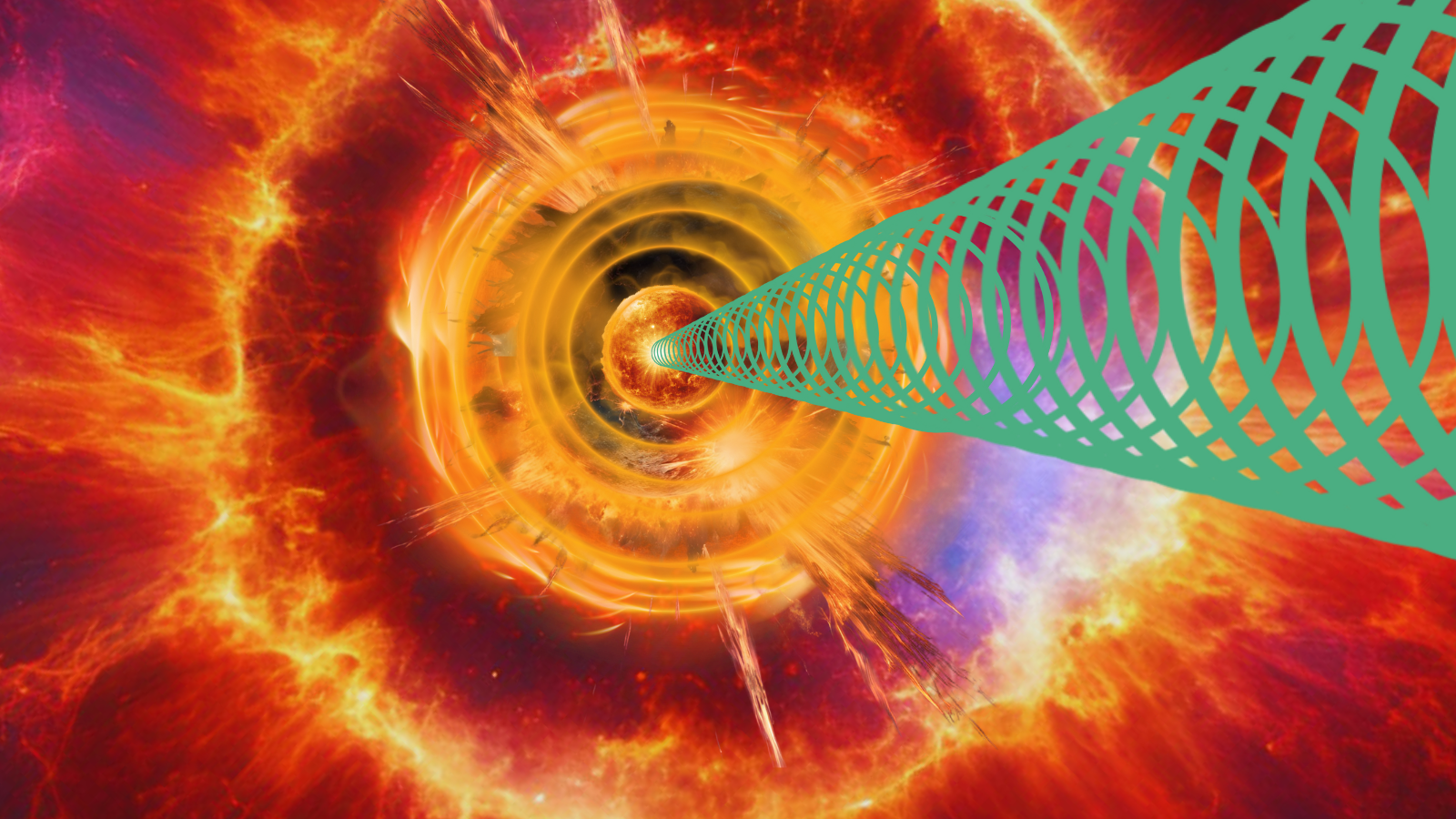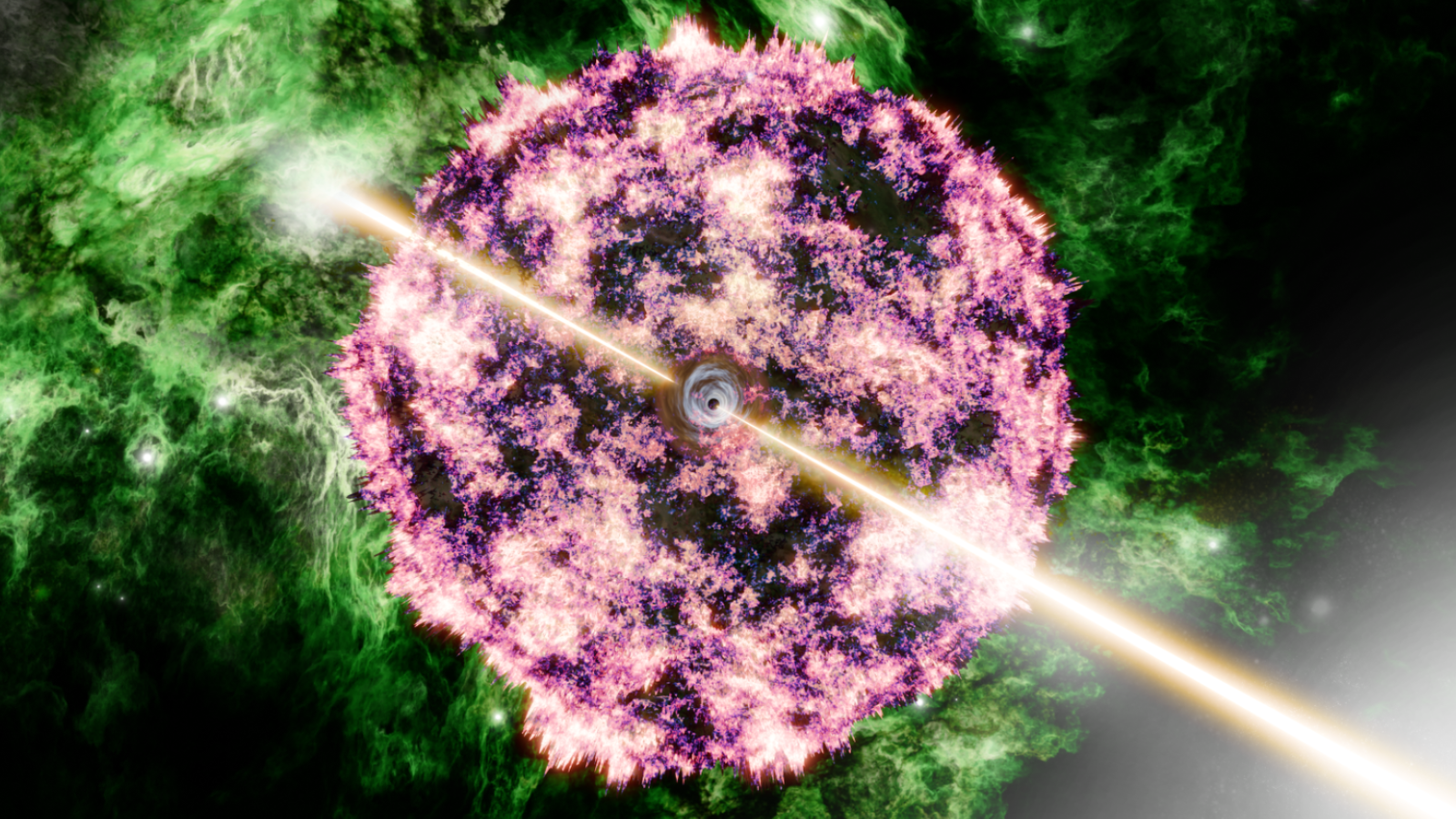Astronomers have re-examined the biggest explosion ever seen, possibly the most massive explosion since the Big Bang, to learn more about mysterious blasts of high-energy called gamma-ray bursts (GRBs).
Aptly named the “Brightest Of All Time,” or the “BOAT,” and officially designated GRB 221009A, this is the most powerful GRB ever detected. And that’s no mean feat, considering that a typical GRB can release as much energy in seconds as it will the sun its entire lifetime of 10 billion years to radiate.
Despite their high-energy nature and intense brightnesses, however, GRB’s have sources very difficult to trace. For that reason, scientists consider GRBs something of an enigma. They appear to originate from outside the Milky Way, but their gamma-ray signal weakens as they travel over these vast distances.
Though GRBs announce themselves with a brief phase, lasting seconds to minutes, this is followed by an afterglow that can take anywhere from hours to months to fade.
They also come in two distinct types, categorized by duration.
Long-period GRBs have durations longer than two seconds and are believed to be launched when the universe’s most massive stars go supernova, leaving behind black holes. Short GRBs, lasting less than two seconds down to just a few milliseconds, are theorized to occur when neutron stars slam together and merge.

The BOAT in particular is thought to have been launched when a massive star located about 2.4 million light-years away from us went supernova at the end of its life. This explosion is thought to have left a stellar-mass black hole in its wake.
Astronomers detected an excess in the gamma-ray flux of the BOAT, which hints that GRBs have a complex nature at high energies. This could add support to the idea that the explosions that generate GRBs sculpt structured, multi-layered jets within which particles are accelerated to high energies.
Chasing the BOAT
The BOAT was first spotted on Oct. 9, 2022 by a range of telescopes, including NASA’s Fermi and Swift spacecraft. Its extreme nature marked it out immediately from other GRBs. Though astronomers originally detected the BOAT as an immensely bright flash of high-energy gamma rays, this flash was followed by a fading afterglow across many wavelengths of light, thus allowing non-gamma-ray-based telescopes to study it.
This team conducted their analysis with the Large-Sized Telescope (LST) prototype (LST-1) at the Roque de los Muchachos Observatory in La Palma, Spain. The LST began observing the BOAT around one day and eight hours after the initial explosion was spotted during the telescope’s commissioning phase, and in the challenging conditions of the full moon.
Following the BOAT for 20 days allowed the researchers to place constraints on the upper limits of high-energy gamma-rays from the blast. That means these observations could help discriminate between possible GRB creation mechanisms.

Whether generated by clashing neutron stars or in the supernova deaths of massive stars, GRBs are thought to involve the ejection of a hyper-speed jet of ionized gas or plasma. But, quite how this jet is built has been a puzzle.
The LST-1 observations of the BOAT seem to indicate this GRB was powered by a layered jet consisting of a high-speed central cone of matter sheathed in a wider tunnel of slower-moving matter.
Not only does this contradict models that suggest plasma jets have a structure more akin to the shape of a top hat, with the brim made of lower-energy particles, but it also hints at the nature of the central engine driving these jets.
While astronomers attempt to learn more about GRBs and the mechanisms that drive them using the hints delivered by this work, the research demonstrates the capability of telescopes like the LST to study the high-energy universe.
Three more LST instruments are currently under development at the same site as LST-1; the construction of similar telescopes is beginning at a site in Chile, meaning arrays will soon be operational in both the northern and southern hemispheres of Earth.
This should further boost humanity’s ability to study GRBs and the high-energy universe in general, as well as cut down the time it takes to alert astronomers to these transient events.
The team’s research was published on July 23 in The Astrophysical Journal Letters.
Source link


